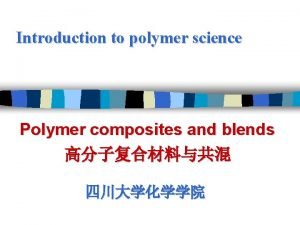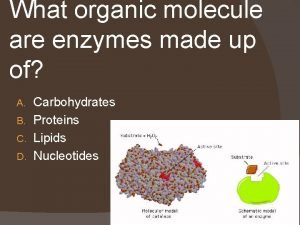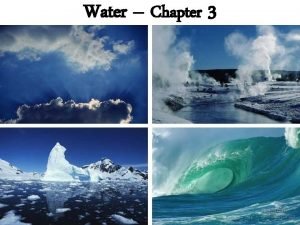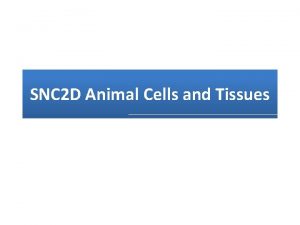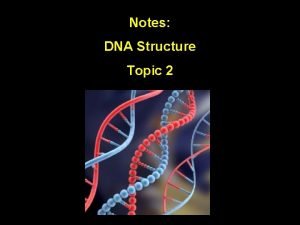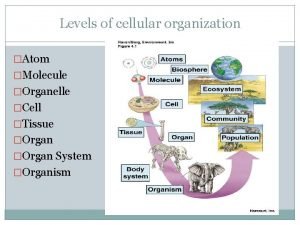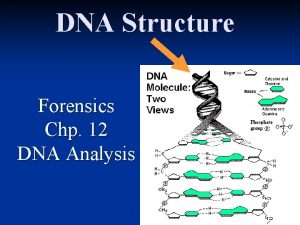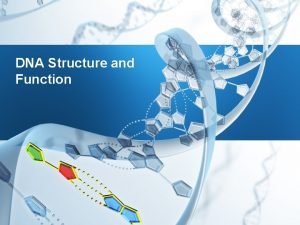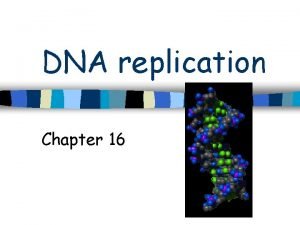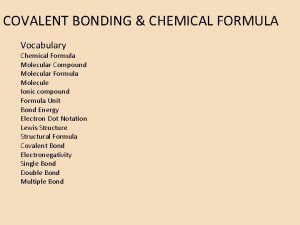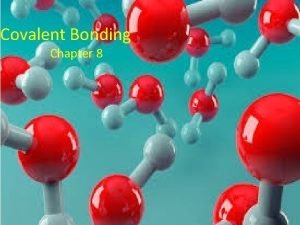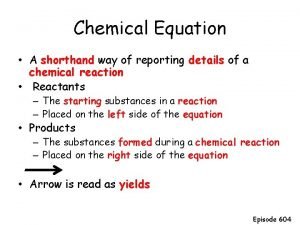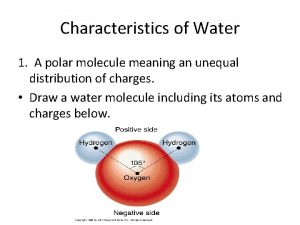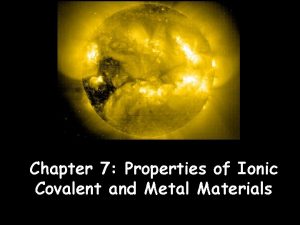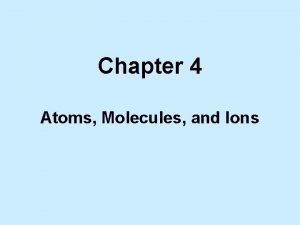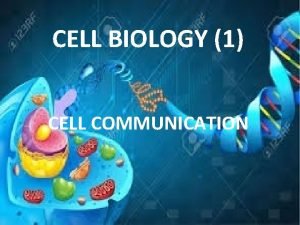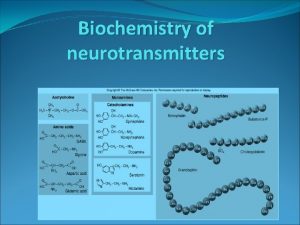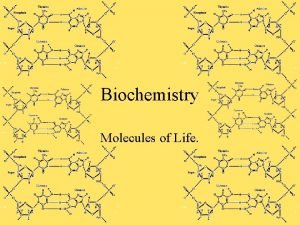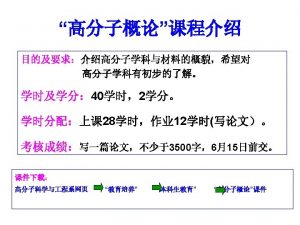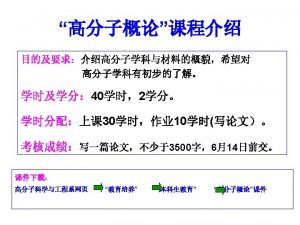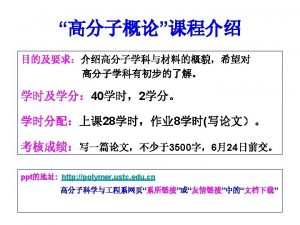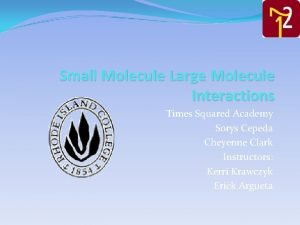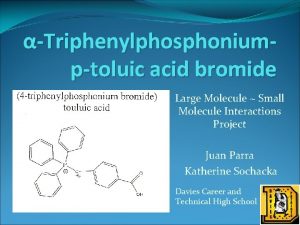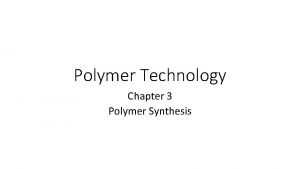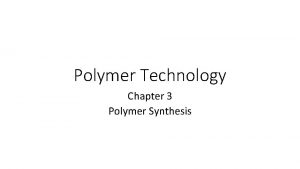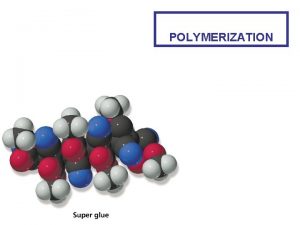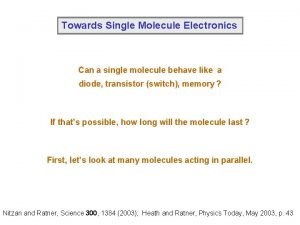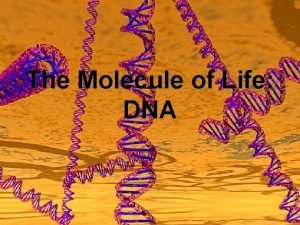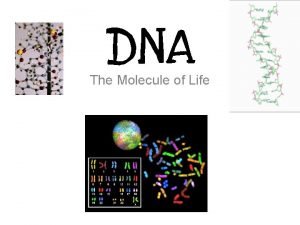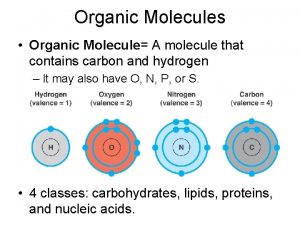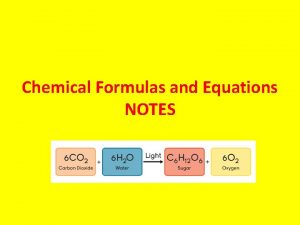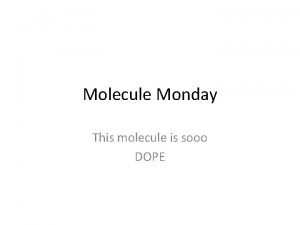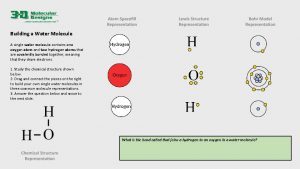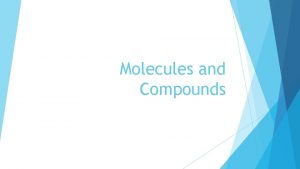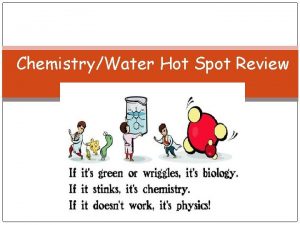POLYMER Introduction A polymer is a large molecule






















- Slides: 22

POLYMER

Introduction � A polymer is a large molecule, or macromolecule, composed of many repeated subunits. Due to their broad range of properties, both synthetic and natural polymers play essential and ubiquitous roles in everyday life. Polymers range from familiar synthetic plastics such as polystyrene to natural biopolymers such as DNA and proteins that are fundamental to biological structure and function.

� Polymers, both natural and synthetic, are created via polymerization of many small molecules, known as monomers. Their consequently large molecular mass, relative to small molecule compounds, produces unique physical properties including toughness, viscoelasticity, and a tendency to form glasses and semicrystalline structures rather than crystals. The terms polymer and resin are often synonymous with plastic.

Classification � The most common way of classifying polymers is to separate them into three groups thermoplastics, thermosets, and elastomers. The thermoplastics can be divided into two types - those that are crystalline and those that are amorphous.

Thermoplastics � Molecules in a thermoplastic are held together by relatively weak intermolecular forces so that the material softens when exposed to heat and then returns to its original condition when cooled. Thermoplastic polymers can be repeatedly softened by heating and then solidified by cooling - a process similar to the repeated melting and cooling of metals

� � Most linear and slightly branched polymers are thermoplastic. All the major thermoplastics are produced by chain polymerization. Thermoplastics have a wide range of applications because they can be formed and reformed in so many shapes. Some examples are food packaging, insulation, automobile bumpers, and credit cards.

Thermosets � A thermosetting plastic, or thermoset, solidifies or "sets" irreversibly when heated; they cannot be reshaped by heating. Thermosets usually are threedimensional networked polymers in which there is a high degree of cross-linking between polymer chains. The cross-linking restricts the motion of the chains and leads to a rigid material.

� Thermosets are strong and durable. They primarily are used in automobiles and construction. They also are used to make toys, varnishes, boat hulls, and glues.

Elastomers � Elastomers are rubbery polymers that can be stretched easily to several times their unstretched length and which rapidly return to their original dimensions when the applied stress is released. Elastomers are cross-linked, but have a low crosslink density.

� The polymer chains still have some freedom to move, but are prevented from permanently moving relative to each other by the cross-links. To stretch, the polymer chains must not be part of a rigid solid - either a glass or a crystal. An elastomer must be above its glass transition temperature, Tg. Tg, and have a low degree of crystallinity. Rubber bands and other elastics are made of elastomers.

Chemical properties � The attractive forces between polymer chains play a large part in determining polymer's properties. Because polymer chains are so long, these interchain forces are amplified far beyond the attractions between conventional molecules. Different side groups on the polymer can lend the polymer to ionic bonding or hydrogen bonding between its own chains. These stronger forces typically result in higher tensile strength and higher crystalline melting points.

� � The intermolecular forces in polymers can be affected by dipoles in the monomer units. Polymers containing amide or carbonyl groups can form hydrogen bonds between adjacent chains; the partially positively charged hydrogen atoms in N-H groups of one chain are strongly attracted to the partially negatively charged oxygen atoms in C=O groups on another. These strong hydrogen bonds, for example, result in the high tensile strength and melting point of polymers containing urethane or urea linkages.

� � Polyesters have dipole-dipole bonding between the oxygen atoms in C=O groups and the hydrogen atoms in H-C groups. Dipole bonding is not as strong as hydrogen bonding, so a polyester's melting point and strength are lower than Kevlar's (Twaron), but polyesters have greater flexibility. Ethene, however, has no permanent dipole. The attractive forces between polyethylene chains arise from weak Van der Waals forces. Molecules can be thought of as being surrounded by a cloud of negative electrons. As two polymer chains approach, their electron clouds repel one another.

POLYMERIZATION KINETICS � STEP GROWTH - SLOW Can use statistical methods as well as kinetics to describe mol. wt. distributions - more on this later � CHAIN Polymerization - FAST Can apply statistical methods to an analysis of the microstructure of the products, but not the polymerization process and things like mol. wt.

KINETICS OF POLYCONDENSATION � � The reactivity of a functional group is independent of the length of the. chain to which it is attached. A - A + B - B A- AB – B Kinetic equation for this type of reaction is usually of the form: Reaction Rate = - d[A] dt = k 2 [A][B]

Copolymerization � A copolymer is a polymer derived from more than one species of monomer. The polymerization of monomers into copolymers is called copolymerization. Copolymers obtained by copolymerization of two monomer species are sometimes called bipolymers. Those obtained from three and four monomers are called terpolymers and quaterpolymers, respectively.

� � Since a copolymer consists of at least two types of constituent units (also structural units), copolymers can be classified based on how these units are arranged along the chain. Linear copolymers consist of a single main chain, and include alternating copolymers, statistical copolymers and block copolymers. Branched copolymers consist of a single main chain with one or more polymeric side chains, and can be grafted, star shaped or have other architectures.

Mechanism of Ziegl. Er-Nata � � The structure of active centers in Ziegler–Natta catalysts is well established only for metallocene catalysts. An idealized and simplified metallocene complex Cp 2 Zr. Cl 2 represents a typical precatalyst. It is unreactive toward alkenes. The dihalide reacts with MAO and is transformed into a metallocenium ion Cp 2 Zr+CH 3, which is ionpaired to some derivative(s) of MAO. A polymer molecule grows by numerous insertion reactions of C=C bonds of 1 -alkene molecules into the Zr–C bond in the ion

� Many thousands of alkene insertion reactions occur at each active center resulting in the formation of long polymer chains attached to the center. The Cossee–Arlman mechanism describes the growth of stereospecific polymers. This mechanism states that the polymer grows through alkene coordination at a vacant site at the titanium atom, which is followed by insertion of the C=C bond into the Ti−C bond at the active center.

Termination � � On occasion, the polymer chain is disengaged from the active centers in the chain termination reaction. Several pathways exist for termination: Cp 2+Zr−(CH 2−CHR)n−CH 3 + CH 2=CHR → Cp 2+Zr−CH 2 R + CH 2=CR–polymer Another type of chain termination reaction called βhydrogen elimination reaction also occurs periodically: Cp 2+Zr−(CH 2−CHR)n−CH 3 → Cp 2+Zr−H + CH 2=CR–polymer

� � Polymerization reactions of alkene with solid titanium-based catalysts occur at special titanium centers located on the exterior of the catalyst crystallites. Some titanium atoms in these crystallites react with organoaluminum cocatalysts with the formation of Ti–C bonds. The polymerization reaction of alkenes occurs similarly to the reactions in metallocene catalysts Ln. Ti–CH 2−CHR–polymer + CH 2=CHR → Ln. Ti– CH 2 -CHR–CH 2−CHR–polymer

� � The two chain termination reactions occurs quite rarely in Ziegler–Natta catalysis and the formed polymers have a too high molecular weight to be of commercial use. To reduce the molecular weight, hydrogen is added to the polymerization reaction: Ln. Ti–CH 2−CHR–polymer + H 2 → Ln. Ti−H + CH 3−CHR–polymer. Another termination process involves the action of protic reagents, which can be intentionally added or adventitious.
 Introduction to polymer blends
Introduction to polymer blends Enzymes are composed of what organic molecule
Enzymes are composed of what organic molecule Are water molecules polar
Are water molecules polar Mole.formula
Mole.formula Atoms
Atoms Dna structure labeled
Dna structure labeled Shapes and polarity of molecules
Shapes and polarity of molecules Cell atom molecule
Cell atom molecule Atomicity example
Atomicity example Water
Water Dna molecule two views
Dna molecule two views Label the parts of the dna molecule.
Label the parts of the dna molecule. Phosphodiester bond in dna
Phosphodiester bond in dna Difference between molecular and covalent
Difference between molecular and covalent Chapter 8 covalent bonding
Chapter 8 covalent bonding Chemist shorthand way of representing chemical reaction
Chemist shorthand way of representing chemical reaction Describe the polar characteristics of a water molecule.
Describe the polar characteristics of a water molecule. Compound vs molecule
Compound vs molecule Formula?
Formula? Ligand signaling molecule
Ligand signaling molecule Flour molecule
Flour molecule Acetylcholine excitatory or inhibitory
Acetylcholine excitatory or inhibitory Carbohydrate organic compound
Carbohydrate organic compound
